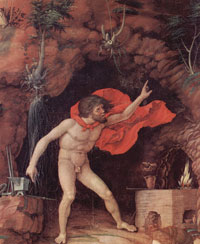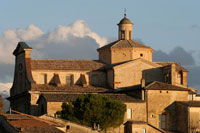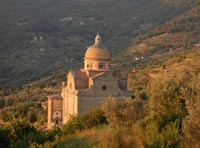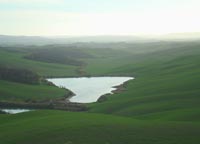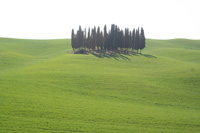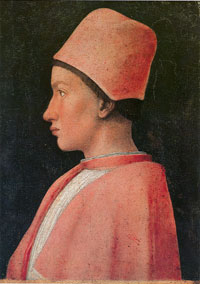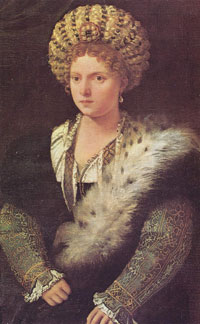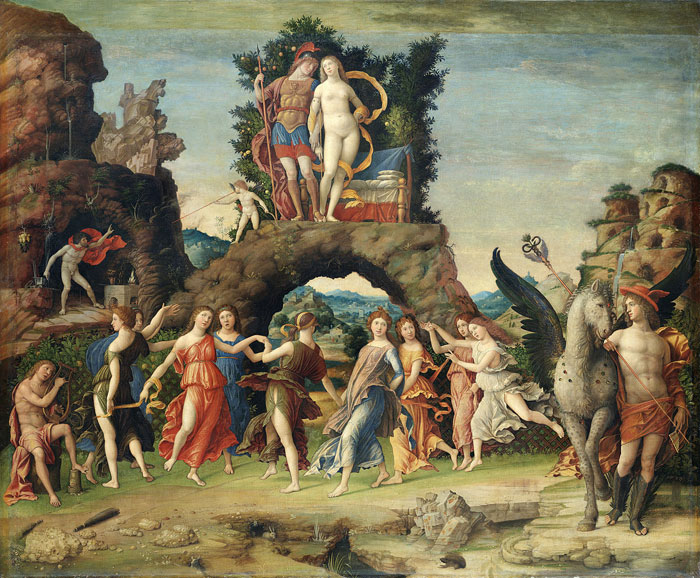 |
|
Andrea Mantegna, Parnassus, 1497, tempera on canvas, 160 x 192 cm, Musée du Louvre, Paris |
|
Andrea Mantegna | Parnassus |
| Around 1495 Isabella d'Este planned to have the most famous painters of her time contribute pictures for her studiolo; she was unsuccessful in obtaining pictures from Leonardo (although he drew her portrait) and Giovanni Bellini, but not for want of trying. Mantegna, her court painter, and Lorenzo Costa, Mantegna's successor, each completed two canvases and Perugino one. Mantegna's so-called Parnassus, completed by 1497, is one of his finest works, much discussed and admired, although the exact meaning of the allegory remains elusive. As a painter dedicated to the study of antiquity and ancient archaeology, it is fitting that Mantegna should have produced a masterpiece with a classical theme. |
| Bibliografia Alberta De Nicolò Salmazo, Mantegna, Electa, Milano 1997. Tatjana Pauli, Mantegna, serie Art Book, Leonardo Arte, Milano 2001. ISBN 9788883101878 Ettore Camesasca, Mantegna, in AA.VV., Pittori del Rinascimento, Scala, Firenze 2007. ISBN 888117099X |
||||
| [1] In 1459 Mantegna went to Mantua to become court painter to the ruling Gonzaga family and accordingly turned from religious to secular and allegorical subjects. His masterpiece was a series of frescoes (1465-74) for the Camera degli Sposi (“bridal chamber”) of the Palazzo Ducale. In these works, he carried the art of illusionistic perspective to new limits. His figures depicting the court were not simply applied to the wall like flat portraits but appeared to be taking part in realistic scenes, as if the walls had disappeared. The illusion is carried over onto the ceiling, which appears to be open to the sky, with servants, a peacock, and cherubs leaning over a railing. This was the prototype of illusionistic ceiling painting and was to become an important element of baroque and rococo art. Mantegna's later works varied in quality. His largest undertaking, a fresco series on the Triumphs of Caesar (1489, Hampton Court Palace, England), displays a rather dry classicism, but Parnassus (1497, Louvre, Paris), an allegorical painting commissioned by Isabelle d'Este, is his freshest, most animated work. [2] Lo Studiolo di Isabella d'Este nel Palazzo Ducale di Mantova Lo Studiolo era un ambiente privato di Isabella d'Este nel Palazzo Ducale di Mantova. Situato inizialmente al piano nobile del castello di San Giorgio, venne trasferito nel 1523 negli appartamenti di Corte Vecchia. Isabella fu l'unica nobildonna ad avere uno studiolo, a riprova della sua fama di dama colta del Rinascimento, che preferiva gli interessi intellettuali e artistici a uno stile di vita frivolo. Arte in Toscana | Lo Studiolo di Isabella d'Este |
||||
Art in Tuscany | Art in Tuscany | Giorgio Vasari | Lives of the Most Excellent Painters, Sculptors, and Architects
|
||||
This page uses material from the Wikipedia articles Andrea Mantegna, Parnaso (Mantegna) and Isabella d'Este, published under the GNU Free Documentation License. |
||||
|
||||
Montefalco |
Podere Santa Pia |
Podere Santa Pia, garden |
||
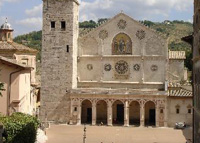 |
||||
The abbey of Sant'Antimo |
Cortona |
Spoleto, Duomo |
||
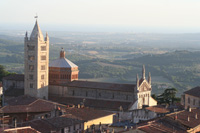 |
||||
Crete Senesi, surroundings of Podere Santa Pia |
Val d'Orcia" tra Montalcino Pienza e San Quirico d’Orcia. |
Massa Marittima |
||
| Isabella d'Este |
||||
| Isabella d'Este (19 May 1474 – 13 February 1539) was Marchesa of Mantua and one of the leading women of the Italian Renaissance as a major cultural and political figure. She was a patron of the arts as well as a leader of fashion, whose innovative style of dressing was copied by women throughout Italy and at the French court. The poet Ariosto lauded her as the "liberal and magnanimous Isabella",[1] while author Matteo Bandello described her as having been "supreme among women".[2] Diplomat Niccolò da Correggio went even further by hailing her as "The First Lady of the world".[2]
She served as the regent of Mantua during the absence of her husband, Francesco II Gonzaga, Marquess of Mantua and the minority of her son, Federico, Duke of Mantua. In 1500 she met King Louis XII of France in Milan on a diplomatic mission to persuade him not to send his troops against Mantua. She was a prolific letter-writer, and maintained a lifelong correspondence with her sister-in-law Elisabetta Gonzaga. Lucrezia Borgia was another sister-in-law; she later became the mistress of Isabella's husband. |
||||
| Early life |
||||
| Due to the vast amount of extant correspondence between Isabella and her family and friends, her life is unusually well-documented.[3] She was born on Tuesday 19 May 1474 at nine o'clock in the evening[4][5] in Ferrara, to Ercole I d'Este, Duke of Ferrara and Leonora of Naples.[6] Leonora was the daughter of Ferdinand I, the Aragonese King of Naples, and Isabella of Taranto. .[7]
One year later on 29 June 1475 her sister Beatrice d'Este was born, and in 1476 and 1477 two brothers, Alfonso and Ippolito arrived. In 1479 and 1480 two more brothers were born; they were Ferrante and Sigismondo. Of all the children Isabella was considered to have been the favourite. In 1479, the year of Ferrante's birth, Isabella travelled to Naples with her mother. When her mother returned to Ferrara, Isabella accompanied her, while the other children stayed behind with their grandfather for eight years. It was during the journey with her mother, that Isabella acquired the art of diplomacy and statecraft. She was described as having been physically attractive, albeit slightly plump; however, she also possessed "lively eyes" and was "of lively grace".[10] In 1480, at the age of six, Isabella was betrothed to Gianfrancesco, the heir to the Marquis of Mantua. Although he was not handsome, Isabella admired him for his strength and bravery; she also regarded him as a gentleman. After their first few encounters, she found that she enjoyed his company and spent the next few years getting to know him and preparing herself to be the Marchesa of Mantua. During their courtship, Isabella treasured the letters, poems, and sonnets he sent her as gifts.
|
|
|||
 |
||||
Podere Santa Pia, a former cloister, is located in the heart of southern Tuscany, just 22 km from Montalcino, in a small hidden valley among the rolling Maremma hills. The panoramic position in the Tuscan countryside offers great views. To the south is the little isle of Montecristo. On a clear day you can even see Corsica, 250 km away. |
||||

